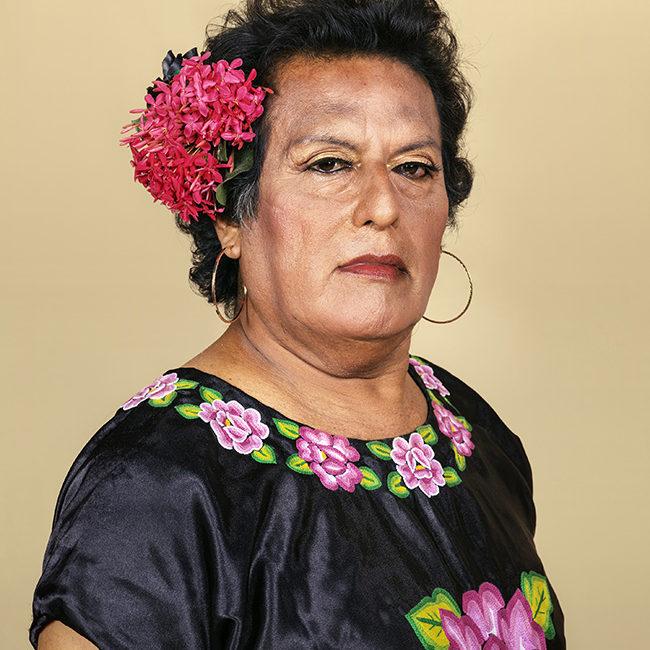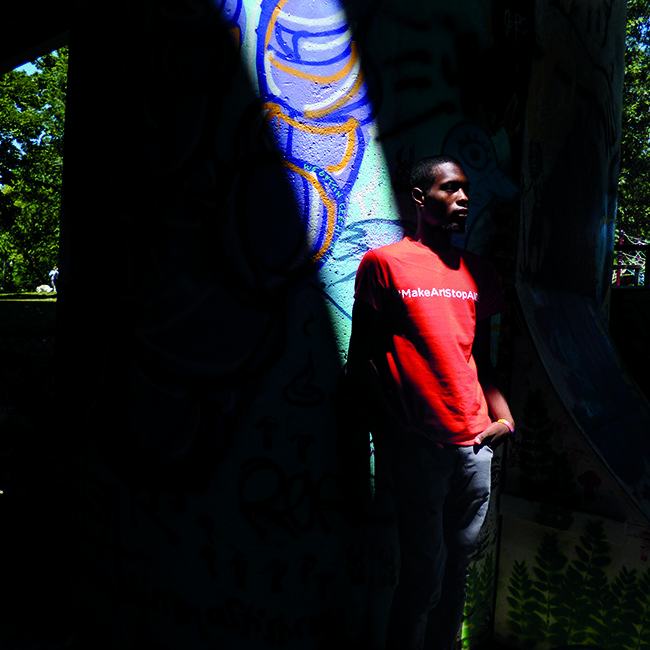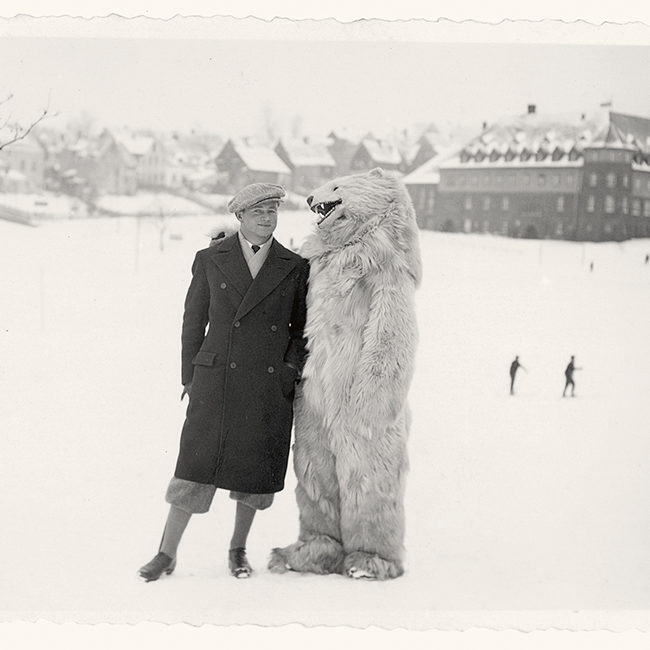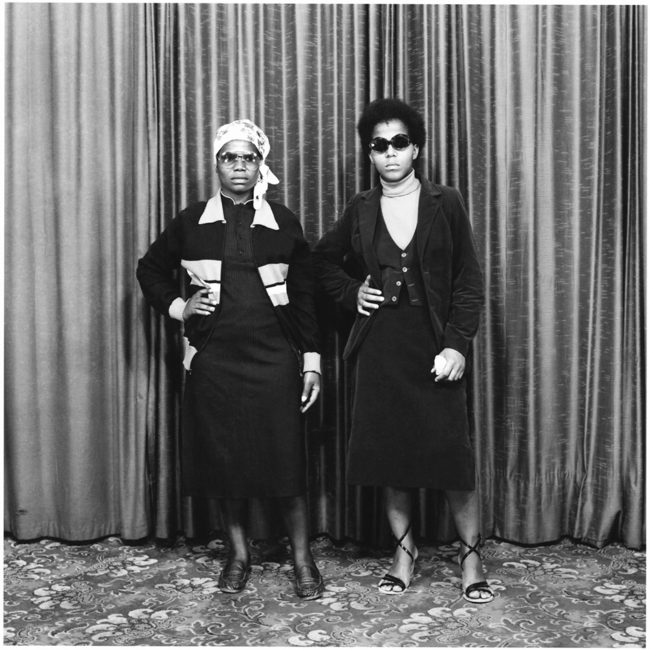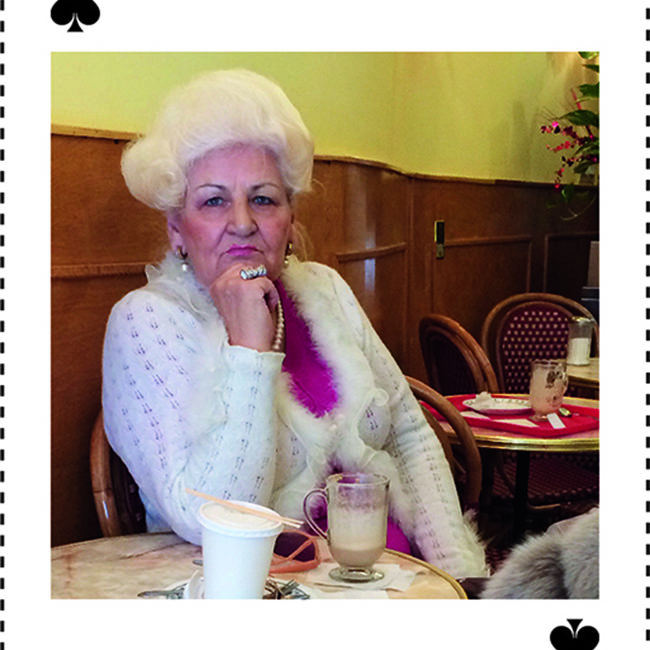Ethnogenesis: a process in which a group of people acquire an ethnicity, that is, a group identity that identifies them as an ethnic group. This can originate through a process of self-identification as well as come about as the result of outside identification.
Tiffany Smith’s fantastical self-portrait series, “For Tropical Girls Who Have Considered Ethnogenesis When the Native Sun is Remote,” questions constructs of identity and the psychological implications of iconography. Smith, a Brooklyn based visual artist who received an MFA in Video and Related Media from the School of Visual Arts, was raised in both Nassau, Bahamas and Miami, Florida. “From an early age,” states Smith, “[I have] navigated the path between assimilation and preservation of cultural identity, ultimately creating a hybrid identity.”
The self-portraits are inspired by Smith’s efforts to come to terms with what she views as the “space between two worlds.” Though she is technically American, she spent the first nine years of her life in Nassau. Moving to the United States was essentially an immigration. She became acutely aware that she was “not a ‘typical’ American and would be viewed as an outsider.” Now, after years of living in the U.S., she is also viewed as an outsider when visiting family in Nassau or Jamaica. “Defining this in-between space that I occupy is the heart of this project,” writes Smith in an email to PDN.
Smith, who calls herself a “home grown immigrant,” constructs the portraits by pulling details from a combination of personal memories, cultural tropes, and cultural signifiers. “I use the fruit and plant life as props for aesthetics, but also sentimental reasons,” she says. “Food and environment are two of the things I’m most affected by when I ‘visit home.’ My family will usually have freshly picked mangoes waiting for me and I’ll decompress by staring out to the Jamaican mountainside, surrounded by tropical foliage, and devour the fruit.” Some props, such as the constructed peanut headdress, reference particular parts of life on the islands. “For example,” says Smith, “at outdoor concerts or events in Jamaica, you can usually witness a guy wearing a similar, but more expertly constructed, headdress of bagged peanuts for sale.”
Smith believes her experiences are the most succinctly communicated in “Perpetual Tourist” (slide one). The costuming references the memory of her nine-year-old self coming to America and viewing everything with wonderment, “as if visiting Disneyland everyday.” The luggage she carries is decorated with a mass produced “tropical” pattern, and the plants that spew from it, native to the Bahamas, indicate her desire to hold on to relics and memories of her youth. The background is pulled from a vintage postcard of Miami Beach and represents the place she called home during the years that most formidably shaped her sense of self and sense of home. She placed herself hovering above water to symbolize the fluidity of her experiences. “This image sums up most successfully how I feel at all times,” says Smith: “A little bit the insider, little bit the outsider, carrying all the adoration and respect for the culture I’ve descended from close by at all times.”
Beginning this series, Smith initially wanted to create portraits of other women of color who could relate to the experience of being asked “what are you?” She quickly realized that she first needed to explore this experience through her own narrative.
“I find that people tend to obsess over details of ethnic/genetic makeup in order to classify people into social positions,” Smith explains. “Being a light-skinned black woman, there is always an implication that I must be ‘mixed with something,’ an observation that often carries nefarious connotations.” In these patterns of thought, Smith sees the vestiges of colonialism and its far-reaching fallout. “I have a keen and focused desire to contribute to adjusting the way that people of color are represented, allowing for accurate representations of the immeasurable variances among us.”
—Sarah Stacke
Related:
The Many Faces of Samuel Fosso
99 Self-Portraits
The Many Faces of Gordon Stettinius
Nan Goldin’s Self-Exploration

